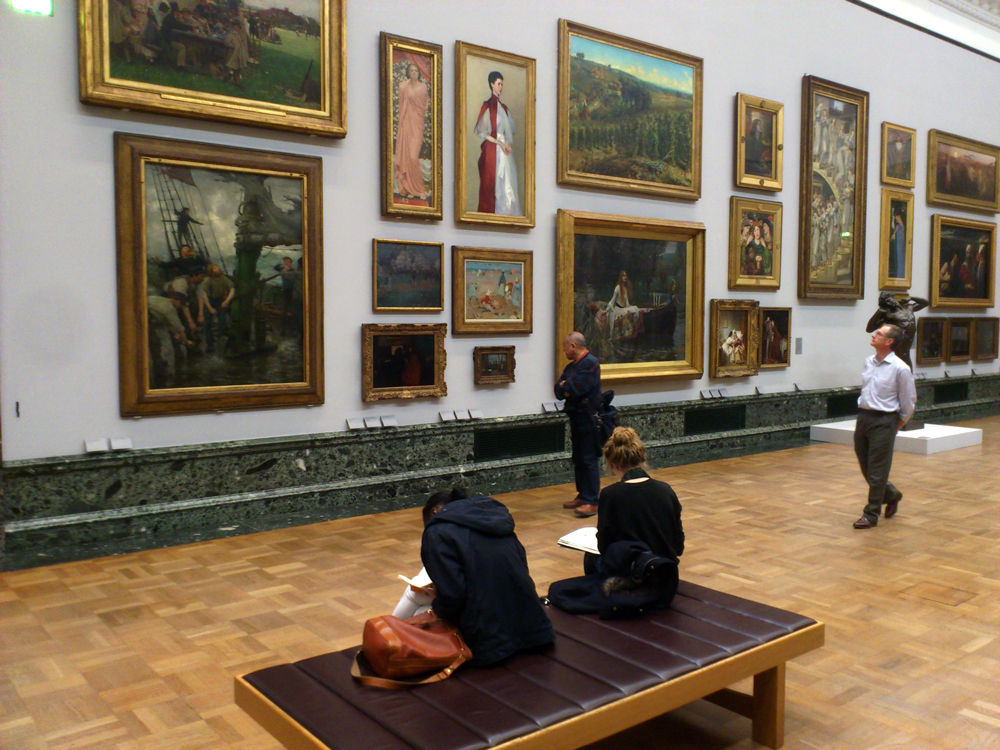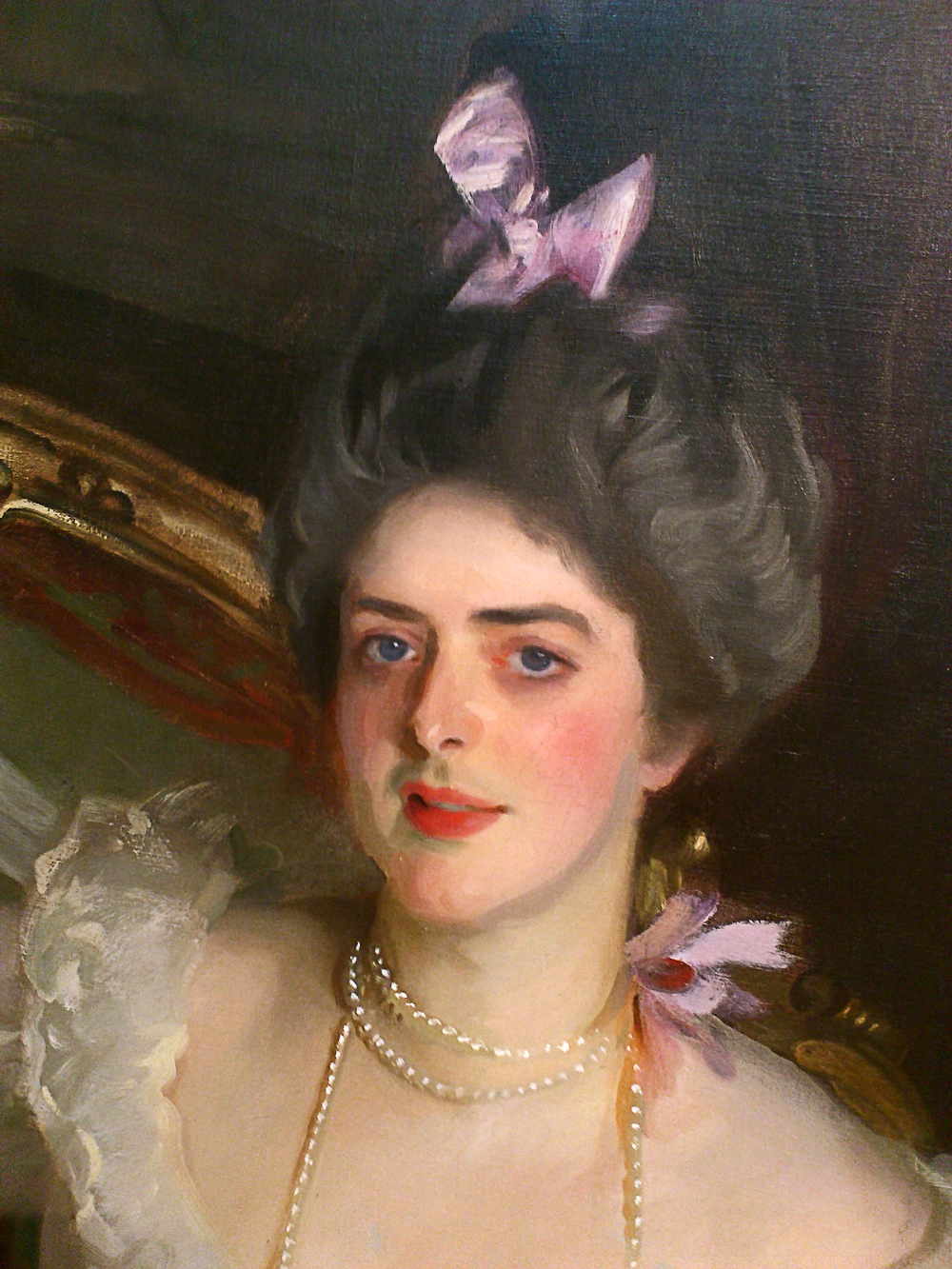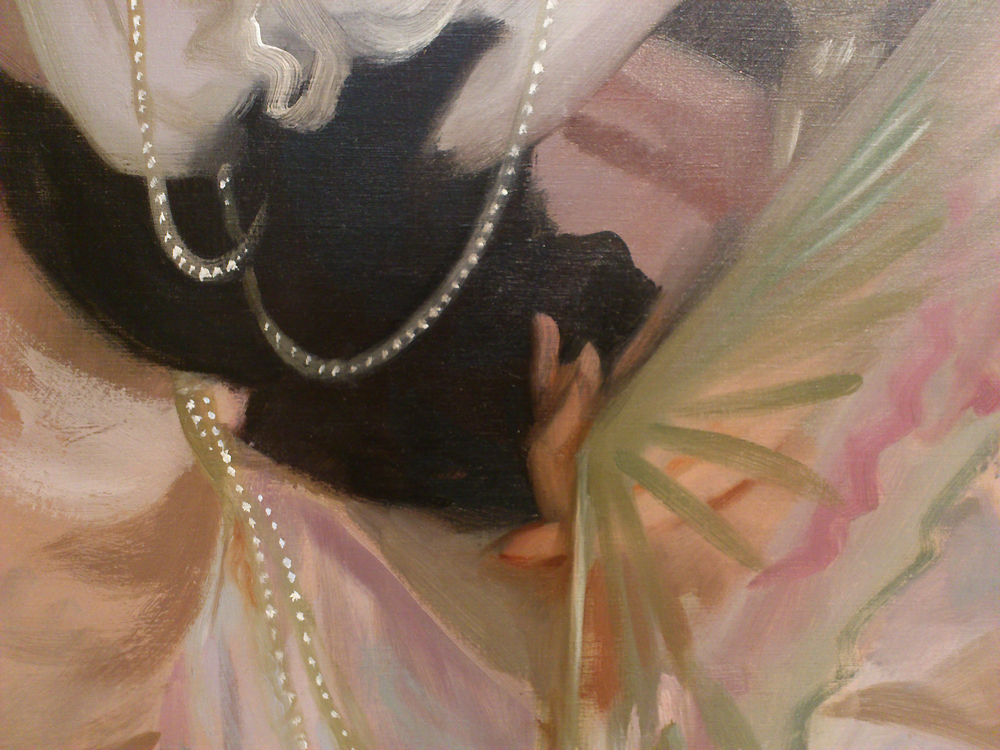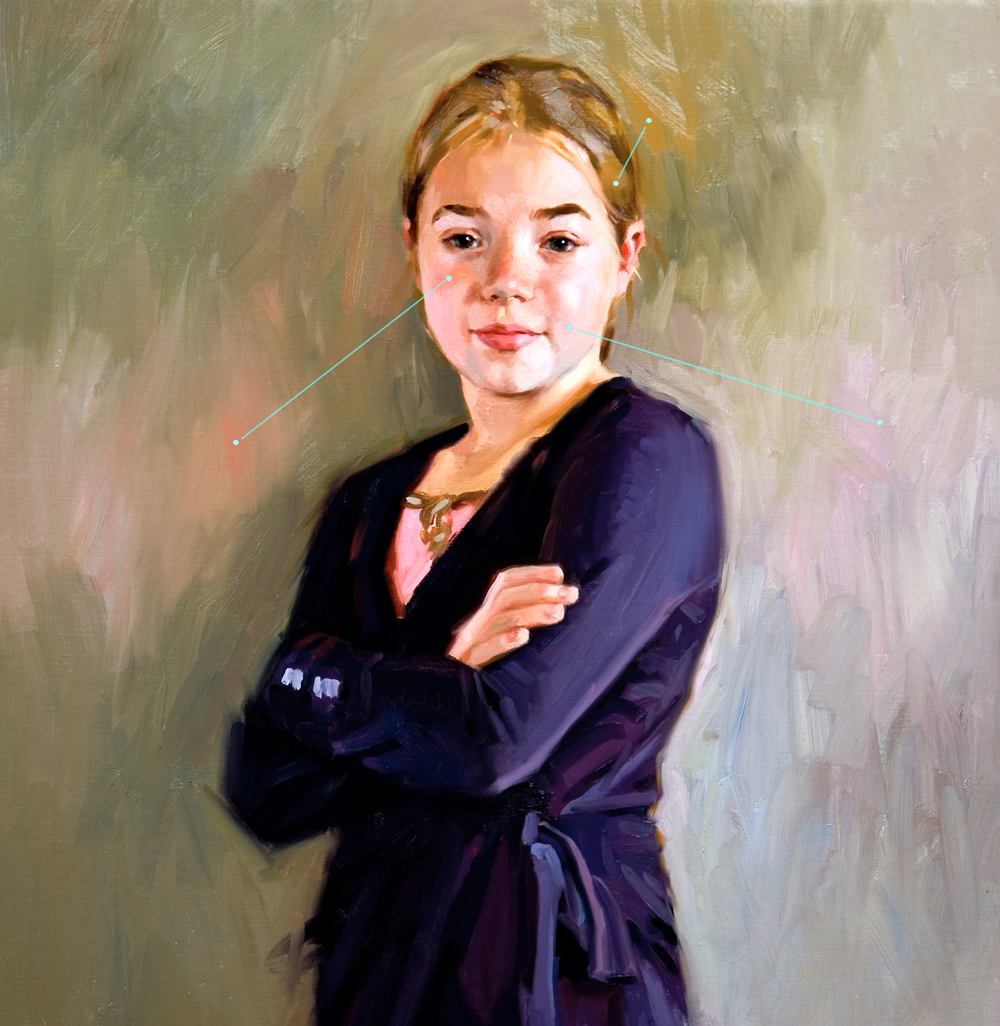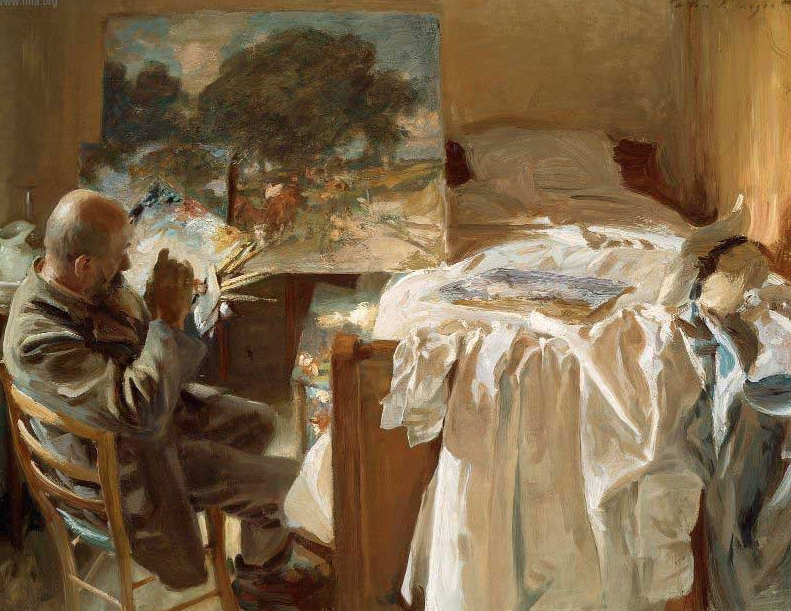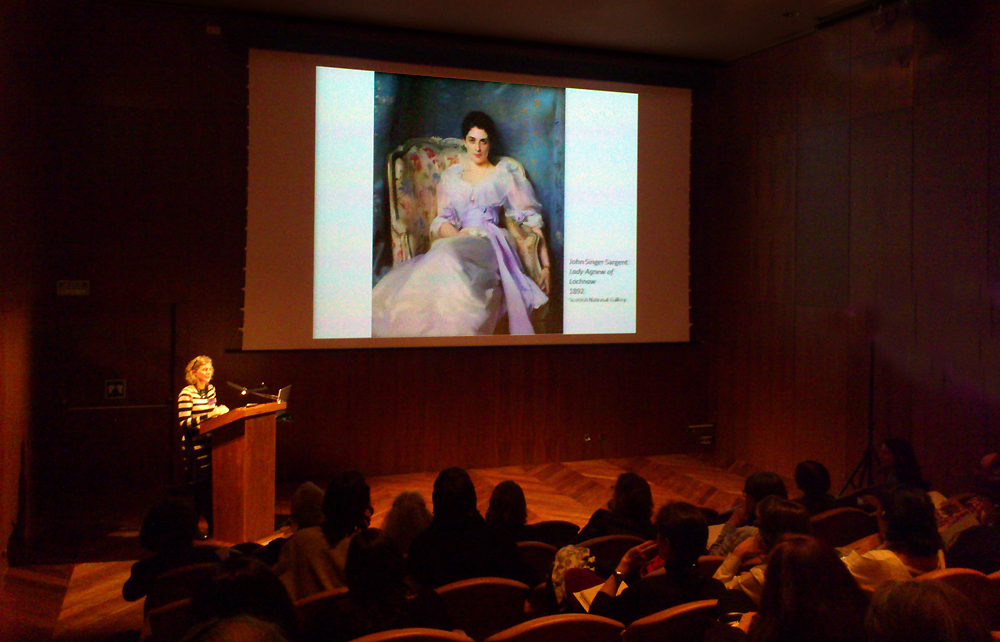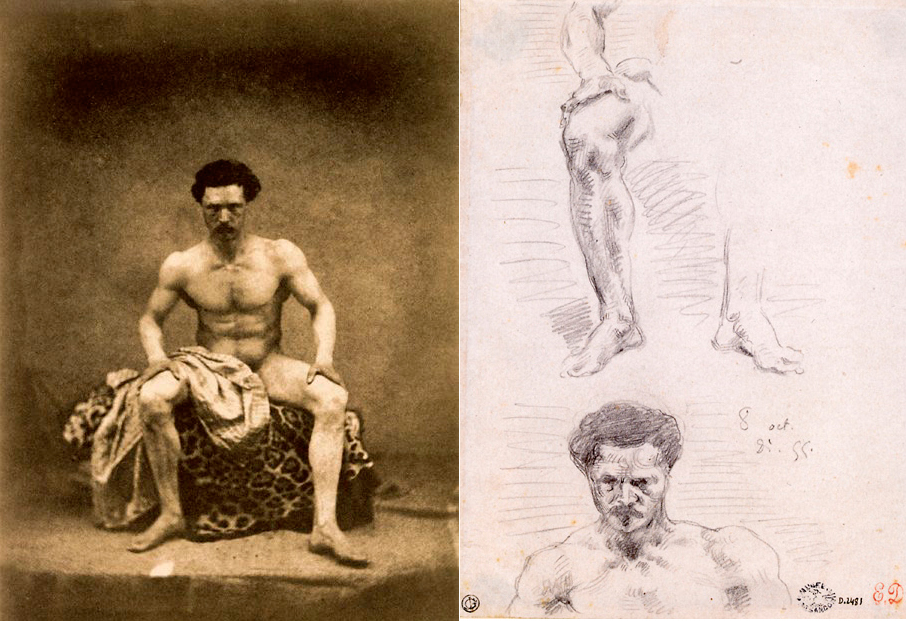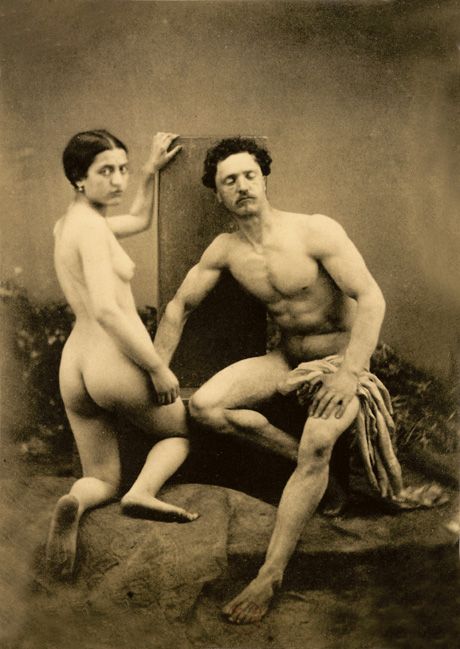Portrait painting and composition.
For a long time the doctrine of composition was inaccessible to me; I could not understand how it worked. So, because of my allergy to all kinds of theories, I ignored it. However, some years ago I engaged again with the subject and discovered that maybe it was not so complicated. This was when I learned there are a number of basic design systems.
I am going to share two of these approaches to composition with you.
The rule of thirds.
Divide the two sides of the rectangle into three equal parts. The “hotspots” lie on the intersection lines. Make sure that your point of focus is located at one of those four points.
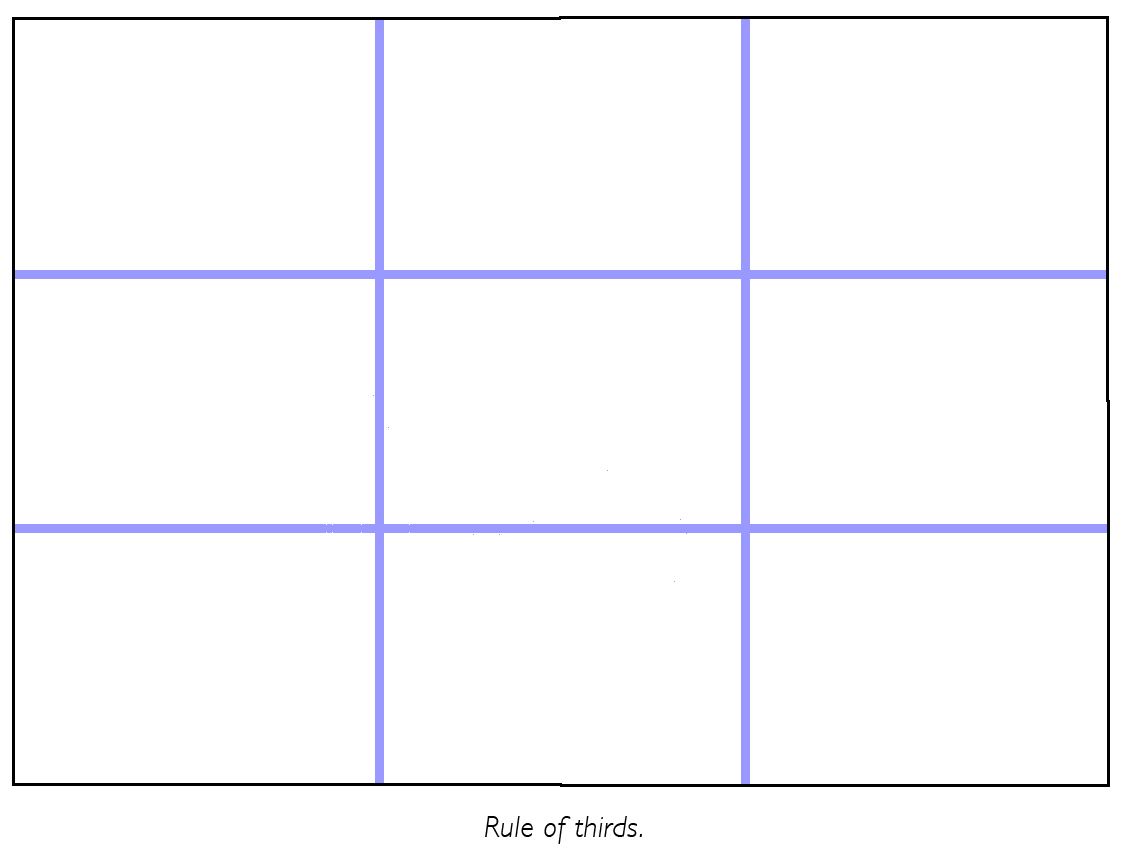
The armature of the rectangle. The formal subdivision.
Start with two diagonals and connect all points as show in the example. This armature provides the limits of the composition. Within these limits the composition can be varied. But where and how?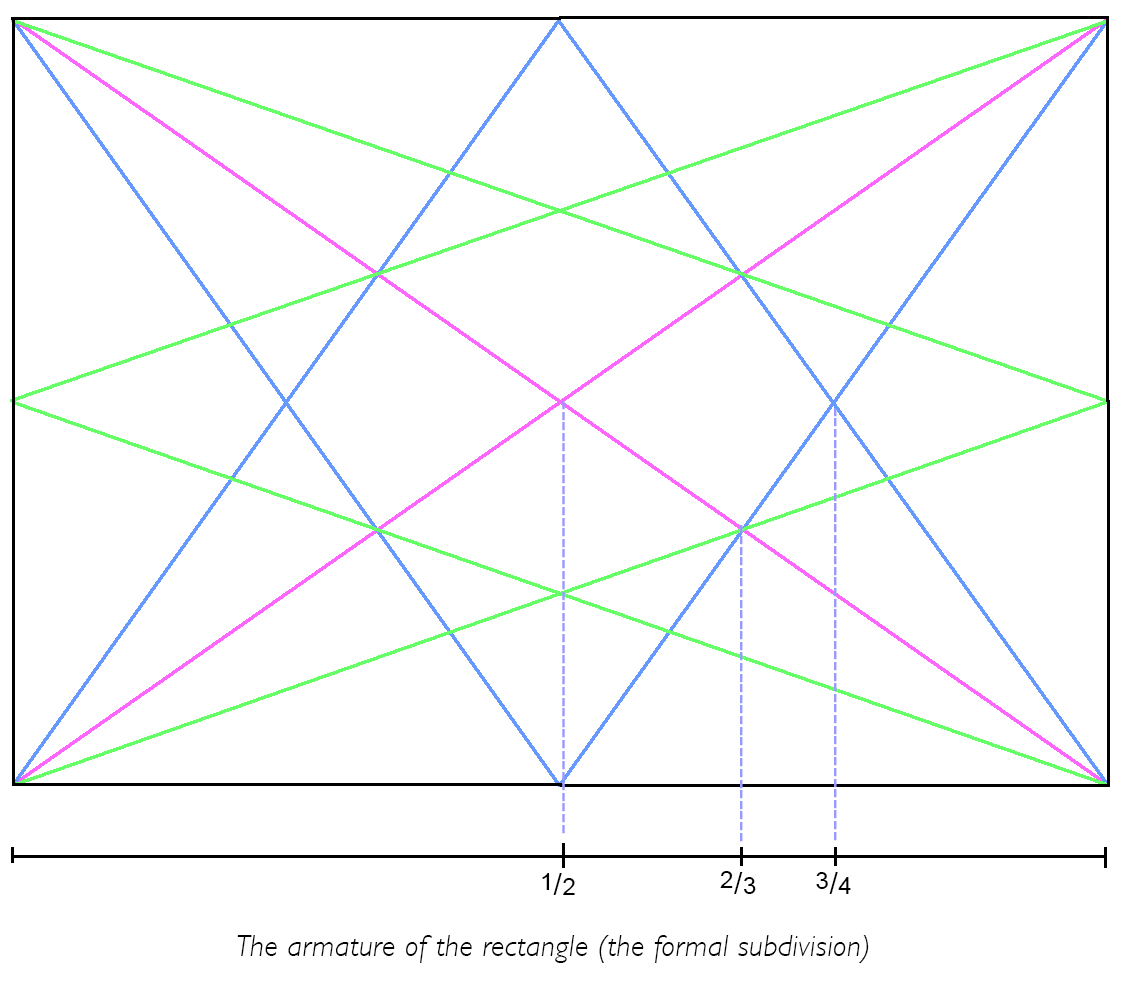
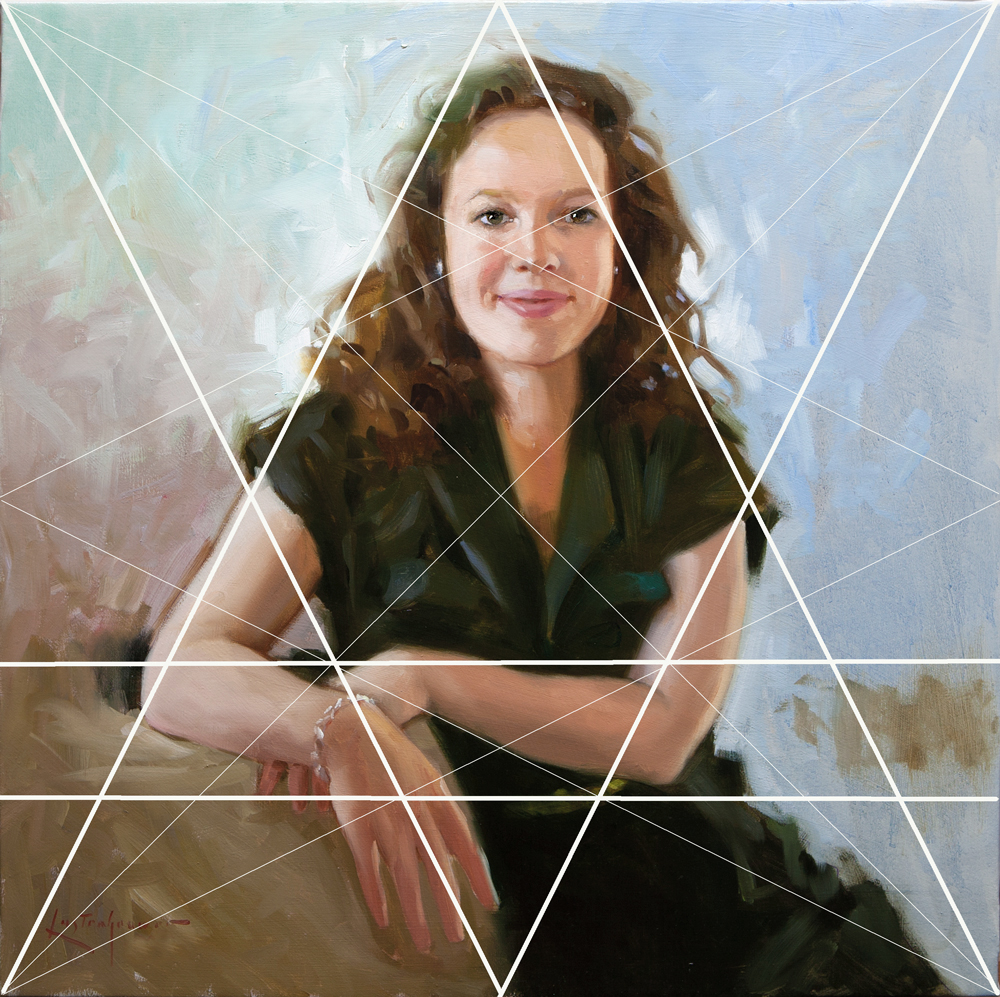
Look what I did with this portrait. I started the photography, at the client’s home, without having any idea of the composition. As always, I found my way while taking photographs. Later, when I made the sketch, I explored if I could capture the whole image in the armature of the rectangle. (In this case, the client wanted a square painting, but the theory is similar ) I added the emphasis on the right to strengthen the horizontal effect which starts at the model´s arms. As simple as that is. I liked the rhythm of the upper arms and also the left hand that follows one of the composition lines. The whole figure fits more or less in the triangle outline, from the top centre to the baseline.
Composition is an essential element in painting, and on the internet you can find an endless list of websites. The risk, however, is that you become dizzy with choice. Take what you like and forget the rest!
